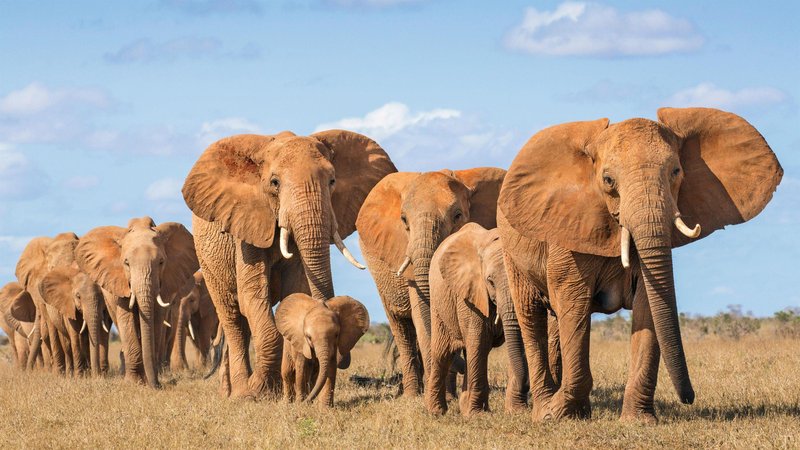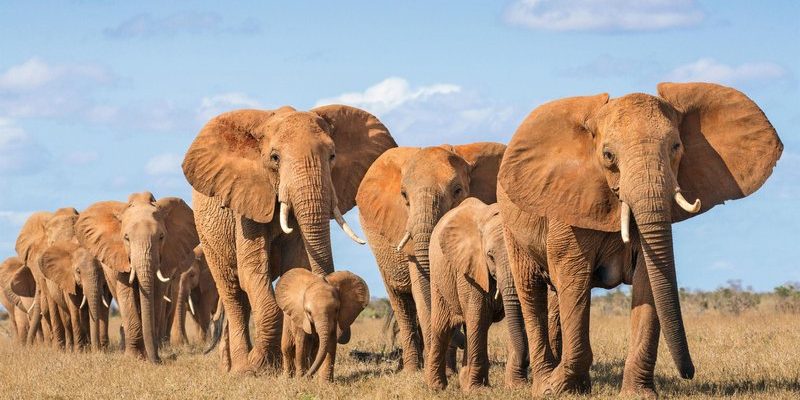
Just imagine you’re out on a scorching summer day with no water in sight. What would you do? You’d probably start looking for shade, right? African elephants do something similar, but they have unique ways to stay cool and hydrated in the wild. Let’s take a closer look at how these remarkable animals navigate their challenging habitats and make the most of their surroundings.
Understanding Their Habitat
African elephants primarily inhabit grasslands, savannas, and forests. Each of these environments presents different challenges. For instance, in the savanna, they deal with extreme temperatures and limited water sources. During dry seasons, the landscape can resemble a vast, parched expanse, which makes finding food and water a creative endeavor.
Elephants are expert foragers. They can eat around 300 pounds of vegetation daily! This means they often have to travel long distances to find the right food. In forests, the challenges shift. Dense vegetation makes it hard to navigate, and the competition for resources increases. Elephants adapt by using their strong trunks to reach high branches, becoming skilled at taking advantage of whatever nature offers.
One of the most fascinating aspects of their habitat is the seasonal changes. Elephants migrate to follow water sources, a journey that can take them hundreds of miles. This ability to adapt to their environment is crucial for their survival.
Cooling Off: How Elephants Beat the Heat
You might be wondering how these enormous animals cope with intense heat. After all, it’s not just about the size; it’s about how they manage their body temperature. African elephants have a few tricks up their sleeves. For starters, they often take mud baths. Sounds fun, right?
When elephants coat themselves in mud, it serves as a natural sunscreen, protecting their skin from harmful UV rays. Plus, it cools them down and helps them lose excess heat. You might see them flapping their massive ears, which act like natural fans. As blood circulates through their ears, it cools down before going back into their bodies. It’s a natural way to regulate their temperature!
In addition, elephants are social animals. They often gather in groups, providing shade for one another under trees or other large structures. Staying close to family and friends has its perks—not just for emotional support but also for cooling off on those sweltering days.
Water Sources: The Lifeblood of Elephants
Water is life, and for African elephants, it’s crucial for survival. During the dry season, finding water can be akin to finding gold. These elephants have an extraordinary ability to locate water sources. It’s said that they can smell water from several miles away!
When they find a water hole, they don’t just drink. They often dig into riverbeds or create their own water holes using their powerful trunks, which can lift over 400 pounds. This behavior not only benefits them but also creates water sources for other animals, making elephants a vital part of the ecosystem.
Moreover, during times of drought, elephants will dig deep into the earth to access underground streams, showcasing their incredible adaptability and intelligence. This resourcefulness is key not just for their survival but also for the balance of their environment.
Diet and Feeding Strategies
Now that we understand where elephants live and how they manage heat, let’s talk about what they eat. African elephants are herbivores, munching on grasses, leaves, fruits, and bark. You might think eating all that sounds easy, but the reality is they need to be strategic about it.
During dry periods, many food sources become scarce. So, elephants will stick to areas with the most abundant vegetation. They use their trunks to strip leaves from high branches and can even peel the bark from trees for a nutritious treat. This method of foraging means they can adapt their diet based on availability.
Interestingly, elephants can also consume up to 150 different species of plants in one day. This variety helps them stay nourished and healthier. It’s like having a buffet at their fingertips, ensuring they don’t just survive but thrive, even when conditions are tough.
Social Structures: The Power of Community
One of the most striking features of African elephants is their complex social structures. They live in tight-knit family groups led by a matriarch, usually the oldest and wisest female. The relationships within these groups are vital for survival.
By staying in groups, elephants gain protection from predators. They also share knowledge about water sources, food availability, and migration routes. It’s like having a built-in support network! Younger elephants learn crucial survival skills from older members, which is key for navigating their often harsh environments.
Moreover, their social connections extend beyond their immediate family. They exhibit behaviors like greeting one another and offering comfort, which strengthens bonds. In times of stress or danger, this community aspect becomes a significant advantage.
Facing Threats: Natural and Human Challenges
Life isn’t always easy for African elephants. They face various threats, from natural predators like lions to human activities such as poaching and habitat destruction. It’s heartbreaking to think that these beautiful creatures are endangered due to human actions.
For elephants, threats can come from unexpected places. As they search for food and water, they may come into conflict with farmers or encroach upon urban areas. This danger illustrates the delicate balance between wildlife and human activities.
Despite these challenges, elephants show resilience. They navigate around human settlements, employing strategies to avoid conflict. Their strong social structures also help them cope, as they can warn each other of impending dangers.
When you step back and look at how African elephants survive in harsh environments, it’s clear that they are truly remarkable creatures. From their unique cooling methods to their social structures and foraging techniques, they embody resilience and adaptability.
Their ability to find food and water, combined with their strong family ties, enables them to thrive where many other species might struggle. As we continue to learn about these giants, it’s essential to appreciate their role in the ecosystem and the importance of protecting their habitats. After all, their survival is interconnected with ours, reminding us that we all share this planet and must work together to ensure a sustainable future.

